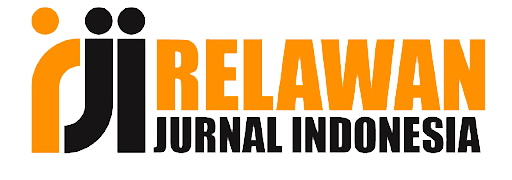The Measurement of the Medical Personnel Emotional Condition In Relation to Service Performance
Abstract
This study emphasizes on the service performance of medical personnel in hospitals, one of which is due to the emotional condition of the services of the medical personnel. The research method used is quantitative method related to the emotional condition of the medical personnel measured using Vital Sign. The research subjects consisted of 67 medical personnel, but only 50 returned the google forms. While the relationship between the two used SPSS version 22. The validity test showed that the service performance variable was appropriate or valid variable.The result of the statistical analysis of Non Parametric correlation shows that there is relationship with the result of the normality test of p (sig) < 0.01. It is proven that the Service Performance variable is not normal, so the test must use the non-parametric correlation test with Spearman-Rho with the correlation coefficient result of 0.562 with p (sig) 0.000. This means that there is significant relationship between the Emotional Condition variable and the Service Performance variable of the medical personnel. The results of this study prove that when the emotional condition of medical personnel increases, the service performance will decrease, which means that the responsibility for service quality decreases somewhat, dares to take risks for services that are slightly neglected, has service goal that is somewhat less attention, less planning for services, less thinking about feedback from the services provided, and the possibility of less thinking about getting the opportunity to realize services.
Penelitian ini menekankan pada kinerja pelayanan tenaga medis di rumah sakit yang salah satunya disebabkan oleh kondisi emosional terhadap pelayanan tenaga medis tersebut. Metode penelitian yang digunakan adalah metode kuantitatif yang berkaitan dengan kondisi emosional tenaga medis yang diukur dengan menggunakan Vital Sign. Subjek penelitian terdiri dari 67 tenaga medis, namun yang mengembalikan google form hanya 50 orang. Sedangkan untuk hubungan keduanya menggunakan SPSS versi 22. Uji validitas menunjukkan bahwa variabel kinerja pelayanan merupakan variabel yang tepat atau valid. Hasil analisis statistik korelasi Non Parametrik menunjukkan adanya hubungan dengan hasil uji normalitas p (sig) < 0,01. Hal ini terbukti bahwa variabel Kinerja Pelayanan tidak normal, sehingga pengujian harus menggunakan uji korelasi non parametrik dengan Spearman-Rho dengan hasil koefisien korelasi sebesar 0,562 dengan p (sig) 0,000. Hal ini berarti terdapat hubungan yang signifikan antara variabel Kondisi Emosional dengan variabel Kinerja Pelayanan Tenaga Medis. Hasil penelitian ini membuktikan bahwa ketika kondisi emosional tenaga medis meningkat maka kinerja pelayanannya akan menurun yang berarti tanggung jawab terhadap mutu pelayanan agak menurun, keberanian mengambil risiko terhadap pelayanan agak kurang diperhatikan, tujuan pelayanan yang agak kurang diperhatikan, kurang merencanakan pelayanan, kurang memikirkan umpan balik dari pelayanan yang diberikan, dan kemungkinan kurang memikirkan untuk mendapatkan kesempatan dalam merealisasikan pelayanan.
Keywords
Full Text:
PDFReferences
Anderson, E., & Oliver, R. L. (2007). Perspectives on behavior-based versus outcome-based salesforce control systems. Journal of Marketing, 51(4), 76–88. https://doi.org/10.1177/002224298705100407
Davis, K., & Newstrom, J. W. (2003). Perilaku dalam organisasi. Jakarta: Erlangga.
Djati, S. P. (2009). Variabel anteseden organizational citizenship behavior (ocb) dan pengaruhnya terhadap service quality pada perguruan tinggi swasta di Surabaya. Jurnal Aplikasi Manajemen, 7(3). https://jurnaljam.ub.ac.id/index.php/jam/article/view/551
Eisenberger, R., Armeli, S., Rexwinkel, B., Lynch, P. D., & Rhoades, L. (2001). Reciprocation of perceived organizational support. Journal of Applied Psychology, 86(1), 42. https://doi.org/10.1037/0021-9010.86.1.42
Fatima, Z., & Azam, M. K. (2017). Relationships between salesforce control systems and salesforce performance: A review of studies. The Marketing Review, 17(4), 451–468. http://dx.doi.org/10.1362/146934717X15144729613906
George, J. M. (2011). State or trait: Effects of positive mood on prosocial behaviors at work. Journal of Applied Psychology, 76(2), 299. https://doi.org/10.1037/0021-9010.76.2.299
Gibson, J. L., Ivancevich, J. M., Donnely, J. H., & Dharma, A. (2012). Organisasi: Perilaku, Struktur, Proses. Jakarta: Erlangga
Goleman, D. (2009). Kecerdasan Emosional: Mengapa EI lebih penting daripada IQ. Jakarta: PT. Gramedia Pustaka Utama.
Greer, C. R. (1995). Strategy and human resources: A general managerial perspective. https://cir.nii.ac.jp/crid/1130282272169855232
Hasibuan, M. (2009). Manajemen, Bumi Aksara Edisi Revisi. Jakarta.
Ilyas, Y. (2012). Kinerja: Teori, penilaian dan penelitian. Depok: Pusat Kajian Ekonomi Kesehatan FKMUI.
Ivancevich, J. M., & Konopaske, R. (2013). Human resource management. McGraw-Hill. https://thuvienso.hoasen.edu.vn/handle/123456789/9602
Kline, P. (2013). Handbook of psychological testing. Routledge. https://www.taylorfrancis.com/books/mono/10.4324/9781315812274/handbook-psychological-testing-paul-kline
Kotler, P. (2008). Manajemen pemasaran (edisi millenium). Jakarta: Salemba Empat.
Kreitner, R., Kinicki, A., & Buelens, M. (2001). Organizational Behaviour,‟ McGraw-Hill. Higher Education, First European Edition, 118.
Labrague, L. J., & Santos, J. A. A. (2020). COVID‐19 anxiety among front‐line nurses: Predictive role of organisational support, personal resilience and social support. Journal of Nursing Management, 28(7), 1653–1661. https://doi.org/10.1111/jonm.13121
Melyana, M., & Sarotama, A. (2020). Implementasi peringatan abnormalitas tanda-tanda vital pada telemedicine workstation. Prosiding Semnastek. https://jurnal.umj.ac.id/index.php/semnastek/article/view/5236
Nazeer, S., Zahid, M. M., & Azeem, M. F. (2014). Internal service quality and job performance: Does job satisfaction mediate. Journal of Human Resources, 2(1), 41–65. https://www.researchgate.net/publication/323561376
Sarwono, S. W. (2010). Pengantar psikologi umum. Jakarta: Rajawali Pers.
Sobur, A. (2003). Psikologi umum. Bandung: Pustaka Setia.
Underhill, E., Rimmer, M., & Gallagher, C. (2001). Health and safety management systems: An analysis of system types and effectiveness. Saf Sci, 41, 301–318. https://www.researchgate.net/publication/265315768
Watmanlussy, R. F., Razak, A., Arifin, M. A., Syafar, M., & Daud, A. (2020). Overview of nurse performance quality of service in theinpatient room dr. D. Anatototi larathospital. Medico-Legal Update. http://repository.unhas.ac.id/id/eprint/9985/
Werner, J. M. (2014). Human resource management and HRD: Connecting the dots or ships passing in the night? In The Routledge companion to human resource development (pp. 89–98). Routledge. https://www.taylorfrancis.com/chapters/edit/10.4324/9780203386446-11/human-resource-management-hrd-jon-werner
Widhiastuti, H. (2010). Mengelola stres menjadi suatu kekuatan. Semarang: University Press.
Wu, A. W., Buckle, P., Haut, E. R., Bellandi, T., Koizumi, S., Mair, A., Øvretveit, J.,Power, C., Sax, H., Thomas, E. J., Newman-Toker, D., & Vincent, C. (2020). Supporting the emotional well-being of health care workers during the covid-19 pandemic. Journal of Patient Safety and Risk Management, 25(3), 93–96. https://doi.org/10.1177/2516043520931971
YC Yip, Y. Y., KH Yip, K. Y., & WK Tsui, W. T. (2021). The transformational experience of junior nurses resulting from providing care to COVID-19 patients: From facing hurdles to achieving psychological growth. International Journal of Environmental Research and Public Health. https://doi.org/10.1177/2516043520931971
DOI: https://doi.org/10.24176/perseptual.v9i2.13398
Refbacks
- There are currently no refbacks.

Jurnal Psikologi Perseptual (eISSN 2580-9520) is licensed under a Creative Commons Attribution-ShareAlike 4.0 International License














